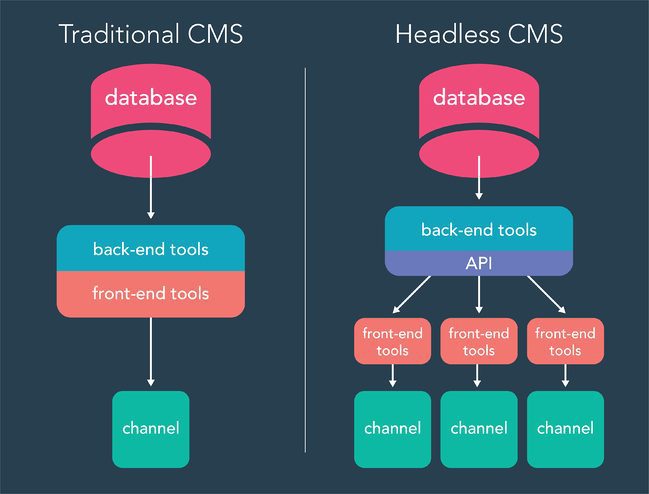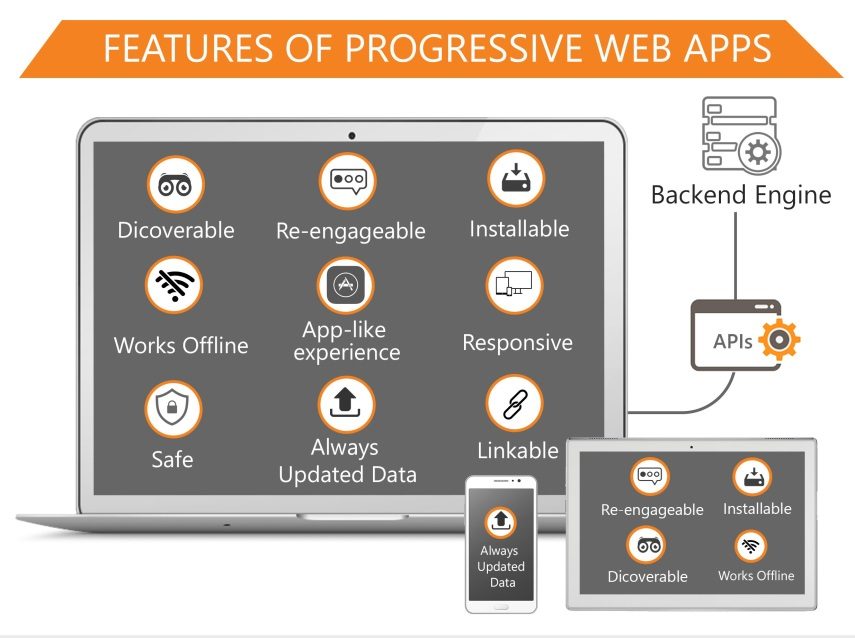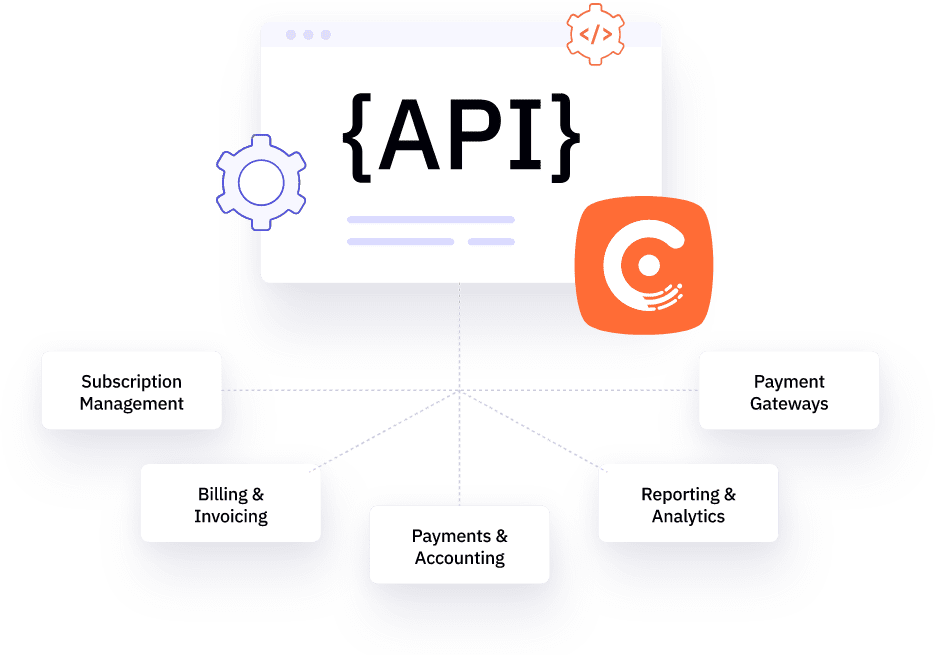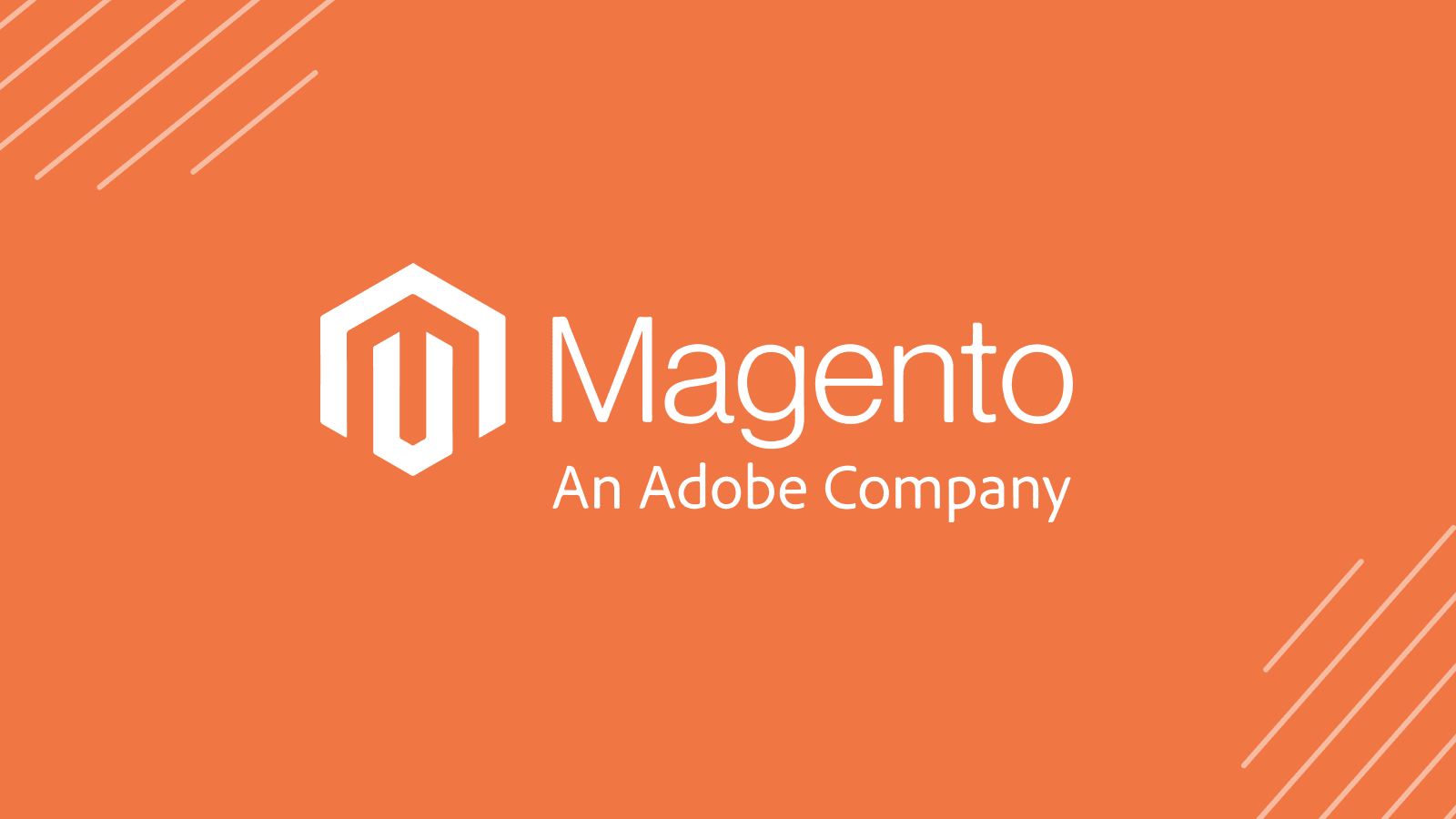“Headless” is one of the hottest buzzwords in eCommerce in 2022. Headless eCommerce platforms allow a store to be fast, innovative, and competitive.
Magento (now known as Adobe Commerce) is one of the most popular eCommerce platforms out there — it’s fully open-source and features an intuitive interface. It also integrates with third-party extensions, which allows you to customize your store to fit your needs. However, Magento is still mostly known as a traditional, monolithic solution.
If you already use Magento or are considering it for your website, you might wonder: is Magento compatible with headless commerce? How do you get started creating a headless Magento store? What are the pros and cons of starting a headless Magento store?
This article introduces headless Magento and what you need to know before you get started.
What Are Headless Magento Stores?
Before we talk about headless Magento stores, let’s look at the definition of headless commerce.
Headless eCommerce uses an architecture that separates the online store’s frontend (the customer-facing website interface) from the backend (the infrastructure powering the site’s functionality). Headless commerce is growing in popularity thanks to its flexibility and customizability.
A headless Magento store is one that uses Magento for its backend commerce functionality but uses a separate solution for the frontend. For example, businesses could use Magento for features like order processing, inventory management, and fulfillment, and have a custom-coded UI to display product pages and videos.
How Is Headless Magento Different Than a Traditional Magento Store?
Traditional eCommerce architecture is monolithic meaning it’s shipped as an “all-in-one” suite that combines the frontend and backend. Businesses use the same platform — in this case, Magento — to manage all the features of the website. However, one of the drawbacks is that customization is limited. Even if you wanted to make a change to the frontend, it may affect the backend as well.

A headless Magento store has a backend and frontend that are bridged by an Application Programming Interface (API). It may have multiple frontends. For example, the same backend could connect to a desktop frontend and a mobile frontend. Building a headless Magento requires more upfront costs and is more complicated than setting up a traditional store.
Why Should You Go Headless With Magento?
1. A Better Customer Experience
Today’s shoppers are demanding. They’re used to eCommerce shops that provide a feature-rich experience, and they’re quick to bounce to the competition if they’re not satisfied with your store.
A headless Magento store gives you the increased flexibility to provide customers with the perfect experience. You’ve got Magento’s core eCommerce competencies for a backend, but your user interface can be anything you want it to be. You’re not locked into using a storefront from any particular vendor, so you can make the best choices for your target audience.
Plus, you have the ability to connect third-party software components using eCommerce APIs. This makes it possible to add almost any website feature to your site without a lot of extra development work.
2. An Omnichannel Solution
Omnichannel is a word that gets thrown around a lot. Even traditional eCommerce platforms claim to be omnichannel.
But a regular eCommerce tool won’t really offer you every available channel. Traditional platforms are limited — if the channel isn’t already supported by the platform, it can’t be easily added.
Magento headless stores are different. You can design different (and personalized) frontends for desktops, tablets, and smartphones. A customized frontend can be created for any channel, so if something new comes along, you can add it to your mix.
3. Better Subscription Management
It’s not just traditional eCommerce website’s going headless — headless architecture has become popular for eCommerce store’s that operates on a subscription box business model as well. The headless strategy lets businesses supplement their core commerce functions with subscription-specific APIs.
For subscription businesses just starting out, a headless solution can be the perfect way to experiment with the business model. Since it’s easy to add and remove modules, you can explore things like revenue models, product types, payment gateways and methods, and currencies without too much commitment. For example, you can use Chargebee with your Magento headless store to improve your subscription offerings.
This flexibility is key for modern subscription commerce due to their heavy emphasis on customization. With headless architecture, they’re no longer restricted by a monolithic platform’s limited design capabilities or themes.
Check out this example: dog food delivery company Kabo improved the user experience and saved money at the same time by adopting a headless eCommerce subscriptions stack based on Chargebee. As Kabo grew, they were able to add additional platform competencies without reinventing the wheel.
Relevant read: How to start your own subscription box business?
4. Slow Site Speeds With Traditional Approach
Are you doing everything you can to maximize your website’s page load speed? If not, you might want to check out a few statistics:
A website that loads in one second has a conversion rate three times higher than a site that loads in five seconds. Moreover, a study of mobile site data found that a 0.1-second improvement in site speed caused retail shoppers to spend almost 10% more.
Magento headless eCommerce stores tend to be faster than the traditional kind. Decoupling the frontend from the backend allows the customer-facing UI to load without loading the backend. This decoupling makes your Magento site load faster for your visitors.
5. Bloated Backend Code
To grow your business and keep up with a changing tech landscape, you need to keep adding content and functionality to your website. With a traditional site, this often results in bloated backend code. Bloated code can result in high load times or other performance issues — which may cause customers to abandon your store.
Creating a Magento headless site mitigates this problem. With the backend and frontend decoupled, you can develop one without adding code to the other. You can add features by choosing best-in-class third-party tools and connecting them with APIs rather than coding everything. Your site’s performance will improve, and you’ll have less development work.
6. Improved Scalability
A traditional eCommerce platform might be fine right now, but your business is growing. What happens when you need new features or a redesign?
The customizability of a Magento headless website makes it easy to adapt and change. As your customers require more features, you can update your headless eCommerce store to provide them. What’s more, your development team can work on different parts of your site without worrying about anything “breaking.”
Growing your business is also easier because of the resource optimization that headless provides. You don’t need to invest in backend development resources every time you want to change a customer-facing interface feature. Without any dependencies on other systems, your frontend developers can be highly specialized and focus completely on customer experiences.
7. Search Engine Optimization
Here’s a benefit of headless commerce that most people don’t think of: it can improve your SEO.
Being headless isn’t a ranking factor for Google or other major search engines. However, as we’ve discussed, headless websites are faster than traditional online stores. And Google likes fast websites — it has confirmed that page load time is a ranking factor.
Moreover, good search engine optimization requires you to make regular updates to your content. This will be easier if you can update your content layer easily.
How Much Does a Headless Magento Store Cost?
There’s no simple answer to this question — it depends on many factors, including:
- Design complexity: Will you use a premade theme or create your own storefronts? Do you need multiple storefronts?
- Third-party integrations: What modules will you add to your application? Do you need licenses and subscriptions for them?
- API customization needs: Do you need to customize APIs to connect tools to your backend?
A simple headless Magento store with limited custom development and integrations might cost only a few thousand dollars to create, while a more complex store could be over $100,000.
Strategies for Going Headless With Magento
So you’re ready to go headless with your Magento eCommerce store.
Magento serves as your eCommerce backend. Now you have to pick a frontend technology (or several). Here are a few strategies you can take.
1. Use a PWA
These days, almost half of website traffic comes from mobile devices. It’s no wonder that eCommerce businesses are heavily focused on providing good mobile experiences.
However, it’s not always easy. Mobile web can be sluggish and patchy, and it’s not the most user-friendly. Meanwhile, not every organization wants to spend time and effort developing downloadable mobile apps.
One solution is to use progressive web apps (PWA). A PWA is delivered through the mobile web but behaves more like a native app. PWAs are fast, reliable, and secure. They’re called “progressive” web apps because PWA content is downloaded progressively, which provides the user with a better experience than a typical website with a responsive design.

2. Build an Adaptive Headless Framework
If you have the development resources, you can code your own custom interface for your headless Magento site. This is the option that gives you the most control and the flexibility to create whatever you want.
The downside is that it requires a team with the right technical expertise. For a custom storefront, you’ll need to have developers that can work with frameworks like React.js, Vue.js, Next.js, or Gatsby.
If you don’t have the technical skills yourself, you can work with an agency to design your custom storefront.
3. Integrate a Headless CMS With Magento
Another option is to deliver the website experience through a third-party content management system (CMS). A headless CMS has an interface to manage content and a RESTful or GraphQL API to deliver content wherever you need it.
Unlike a traditional CMS, which has its own presentation layer, a headless CMS can deliver your content to any interface you use.
A few popular headless CMS tools include:
- Contentful
- Strapi
- Magnolia
- Agility
- Netlify
- Bloomreach
- Sanity
Bonus: Add Subscriptions to Your Magento Store
One of the top benefits of headless commerce is the ability to easily connect more functionality to your site via APIs. You don’t have to spend time coding features; you can simply integrate third-party tools with your site.
A popular option for headless eCommerce store’s is to offer subscriptions. Chargebee works as a modular suite of subscription billing and management APIs designed to complement your existing commerce stack, exchanging information-to and fro-easily with your eCommerce platform. This gives you access to features like recurring payments, tax management, coupon management, payment recovery, and pricing experimentation.

Relevant read: How Headless Subscription Management is Redefining eCommerce?
What To Consider Before Going Headless With Magento?
We’ve seen the many benefits of headless Magento. But headless commerce won’t suit everyone, and there are a few things worth thinking about before you jump in.
1. Increased Complexity
To set up a traditional Magento store, all you have to do is sign up and start making selections. A little coding knowledge can help you create a customized shop, but it’s not necessary.
Headless Magento is different. You’ll need someone with the technical expertise to work with APIs. And if you’re custom coding your storefront, you’ll need developers. If you don’t have them on your team, you’ll have to pay to work with an agency.
If this sounds daunting, don’t worry — a slightly bigger investment upfront is worth it. The flexibility and enhanced user experience you gain make up for the higher complexity.
For help moving from your current platform to a headless solution, check out this article on eCommerce replatforming.
2. Reliance on Developers
The development work doesn’t end after you create your store. A monolithic Magento shop can be maintained and updated by laypeople. But your headless Magento store will require ongoing development resources. At the very least, you need someone with API knowledge to connect new third-party tools and fix any problems with your existing connections.
You can avoid some of the other development work if you don’t create a custom storefront. Using pre-built plugins or a frontend-as-a-service solution is less resource-intensive.
3. High Upfront Cost
Headless Magento stores are more costly upfront due to the price of third-party systems and custom development resources. But headless sites have more functionality, a better customer experience, and the ability to adapt to the times. This leads to greater earning potential.
Headless commerce also saves money because it can be as simple or elaborate as you choose. If you can afford the initial investment, headless pays off.
Headless Magento Stores Examples
Everyone from small startups to major brands is switching to headless Magento for eCommerce. This is just a small selection of eCommerce stores that use Magento with a headless architecture.
1. Rubik’s
We’ve all tried to solve a Rubik’s Cube or two. Before going headless, Rubik’s was trying to solve the problem of a complicated and inflexible backend. The company was looking for a scalable solution that would allow overseas expansion.
After going headless with Adobe Commerce, Rubik’s has load times of less than one second. The website was able to add a lot more features, including zoom functionality on product pages, a mega menu, a sticky menu, a promo-code engine, and rich media tutorials.

2. Zadig & Voltaire
Zadig & Voltaire is a French fashion brand. Its online store was created using a combination of Magento and Vue Storefront technologies, a headless and backend-agnostic Progressive Web App written in Vue.js.
Zadig & Voltaire’s headless site was launched to improve mobile customers’ user experience.

3. Eleganza
High-end menswear brand Eleganza has a sleek, minimalistic website built with Magento and PWA Studio. PWA Studio is Magento’s own framework that lets users build stores based on progressive web apps.

4. UK Meds
UK Meds prescribes and delivers medicine directly to patients who struggle to access traditional providers. It turned to headless commerce when the website couldn’t keep up with growing demand.
UK Meds paired Magento with a PWA and custom API integrations for third-party features like Algolia and Trustpilot. After switching to the new headless site, UK Meds was able to achieve a 39% increase in revenue, a 65% increase in transactions, and a 23% increase in conversions.

Conclusion
Headless commerce is taking the eCommerce world by storm. Taking your Magento site headless leads to greater flexibility, stronger customer experiences, and faster performance.
Headless architecture isn’t just for traditional eCommerce sites — it benefits subscription businesses too. You can use Chargebee to create high-value subscriber experiences alongside Magento or other traditional eCommerce tools you already use.





